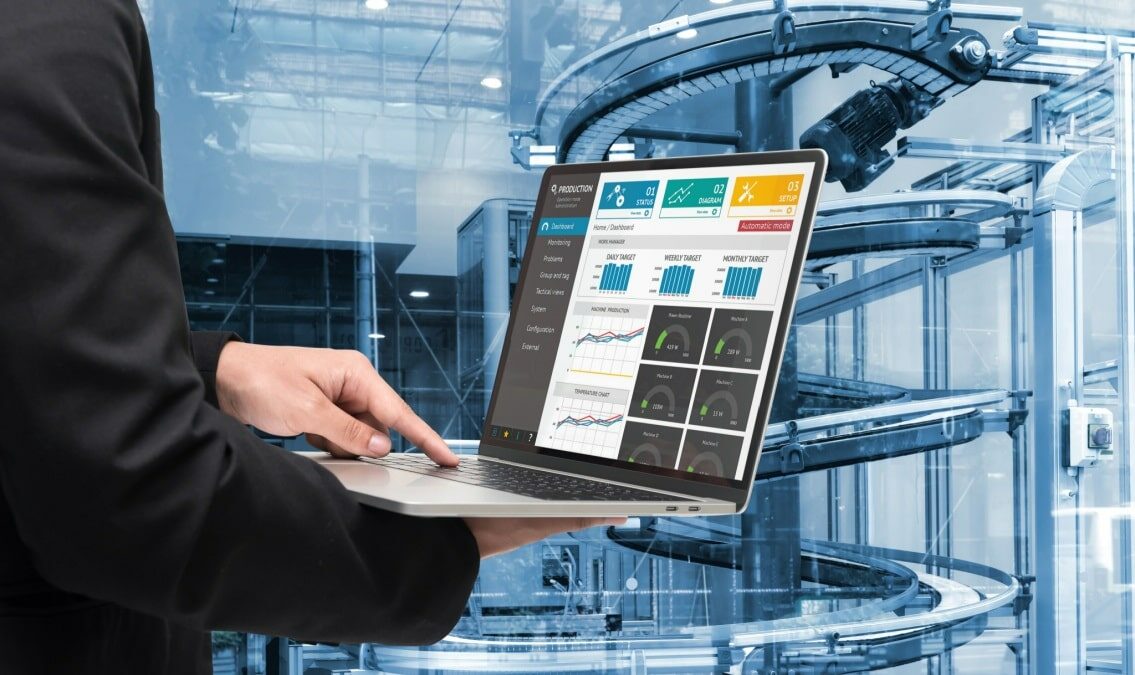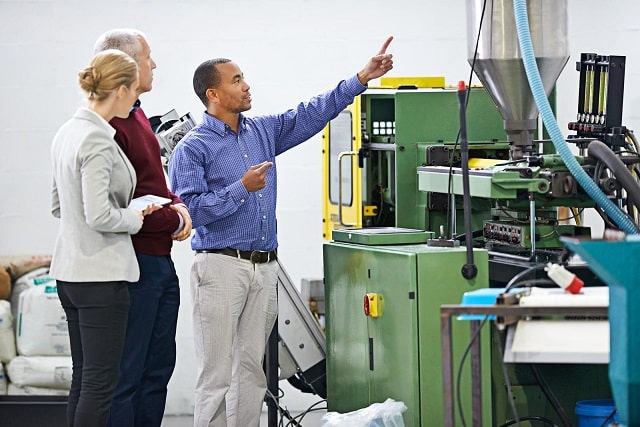What is Property Asset Management? Why is It Important?


It’s great for a business to have in-demand products, competent staff, and a streamlined supply chain. But even so, enterprises need to manage every asset within their organization to control costs and operate more efficiently. And yes, this includes having a strategy in place for your most expensive assets: your property.
This includes all of the property that your business purchases, like office buildings, vehicles, and factories. As a business, every asset you own has the potential for optimization. You have to strategically purchase and manage properties to get maximum ROI — but in a market filled with rising costs and shortages, it’s never been harder to do property asset management.
Learn what property asset management is, why it’s so important, and best practices to help you get the most mileage out of your property asset management practices.
Property asset management is a subset of asset management as a whole. With regular asset management, organizations track every asset that belongs to the company. This includes both tangible assets, like vehicles, and intangible assets, like software.
Property asset management is all about managing an organization’s physical property that it uses to keep the business running. It’s concerned largely with facility upkeep, as well as analyzing how valuable and efficient these assets are at generating revenue for the business.
So not only is property asset management looking at operating costs, but it also focuses on cost-cutting measures so the organization can operate at a leaner budget without compromise.
Every business is different, but property asset management typically includes tracking assets such as:
More often than not, organizations that do property asset management also hire a property asset manager to oversee the entire process. This is a dedicated employee who manages corporate property and might also be referred to as a “building manager.” The building manager lists all property assets, track what’s been purchased, replaces outdated property, and helps the organization keep up with maintenance.
Based on the organization’s needs, a property manager might:
Essentially, property asset management looks at a property’s value and all of the tangible assets within that property. It’s an often overlooked process that has many benefits for organizations in terms of cost savings and productivity.

Property assets are a capital investment into your business. Every office, workshop, factory, or pipeline you install has real value for the business. But every revenue-generating asset requires money to operate effectively, and that’s why property asset management is so important.
With the right approach, property asset management can help organizations:

Property asset management clearly benefits organizations, but how can you get more mileage out of asset tracking? Every organization is different, but these 11 best practices can help you save more money while better understanding the property assets that support your business.
Some businesses purchase assets as stores of value, but how valuable are your property assets, really? Every asset you purchase should be justified by the returns generated by that asset.
Before purchasing an asset, ask yourself:
It’s tempting to add more assets to your organization, but don’t let excitement get the best of you. Make sure that additional assets are truly necessary and that you have the capacity to maintain them long-term.
Whether it’s your office HVAC or the refrigerant system at your factory, documentation is your best friend. Property asset management can often be reduced to actionable checklists that you can share with employees as helpful reference guides, which ensure you take good care of your assets.
Just remember to update your protocols over time. People are unlikely to use your SOPs if they’re five years out of date, so make sure you revisit your protocols at least once a year.
Property asset management can’t happen in a vacuum. A team of decision-makers has to come together to manage assets properly. More often than not, property managers need to meet with CEOs and managers as well as accounting.
Since much of property asset management boils down to revenue, appreciation, depreciation, and other tax implications, it’s always a good idea to have an accountant at the table. They can help organizations write off the costs of property assets in the most efficient way, so never make decisions about these assets without consulting a CPA first.
Just like your car or home, physical assets like your office building need regular maintenance, too. Reactive maintenance will always be necessary, but it’s a good idea to implement proactive maintenance plans, too.
Proactive maintenance ensures your property assets stay in peak physical condition over time. While you can’t prevent every unexpected breakdown, proactive maintenance can significantly reduce disruptions. Follow manufacturer guidelines to invest in the overall health of your assets. This includes making a plan to maintain:
You likely don’t need to add asset labels to entire buildings, but property ID labels are a useful tool for tracking physical assets and systems within a building.
For example, if you have several HVAC systems in your building that were installed at different times, they probably require different maintenance schedules. Instead of putting all HVAC systems on the same maintenance schedule, durable asset tags make it easy for your facilities crew to differentiate various assets.
Camcode’s durable asset labels are long-lasting and empower your team to get immediate information with the tap of a button. With barcode labels and asset tags designed to meet the needs of various property asset tracking needs, from CMMS labels to facility management asset tags, security labels and tamper-evident barcode tags, and labels designed for use in harsh environments, Camcode offers the asset tracking tools you need to build a strong foundation for effective property asset management.
With property asset tags paid with maintenance management software such as preventive maintenance software, CMMS software, or facility management software, employees can scan the barcode or QR code to see the history of an asset. Labeling is a must if you want to reduce misunderstandings and save more money on asset maintenance.
How often do you physically look at your property assets? If you run a multinational company, getting a visual of your assets can be tough. Even so, inspecting major property assets at least once a year is a good idea. A quick inspection will help you determine what, if anything, needs hands-on management.
Property asset management is all about looking toward the future. It’s tempting to aim for short-term cost savings to preserve your quarterly KPIs, but short-term thinking is dangerous for property assets.
For example, if you pay out of pocket for a new phone system at all of your locations, it might initially look like you’re bleeding money. But that upfront cost might make sense in the long run because it makes your properties more efficient and resilient.
Avoid the temptation to cut corners or turn down innovations because they cost money upfront. Property asset management requires investing in your assets so they stand the test of time, so don’t let sticker shock prevent you from making good long-term decisions for the business.
Some organizations have the internal resources to manage property assets themselves. But SMBs often don’t have those resources, and that’s okay. It’s very common for businesses to outsource property asset maintenance tasks on a predetermined schedule.
For example, instead of changing out all of your building’s air filters yourself, you can hire a professional crew to come in every month and do it for you. When in doubt, it’s good to outsource nagging tasks to professionals. Over time, it’s generally cheaper to outsource these tasks instead of hiring a full-time internal staff — plus, this ensures that you never become too overwhelmed to keep up with maintenance.
Building managers have a lot of responsibilities, but that doesn’t mean they’re solely responsible for all of your property assets. Everyone in the organization is responsible for taking care of your assets, including your employees. Make sure employees are regularly trained on the best ways to take care of your assets. This will make your building manager’s job much easier and ensure that you get more life out of your property assets, too.
Utility bills are typically based on usage, so they’re low-hanging fruit for optimizing your property assets. Check your utility bills to see how much energy, gas, and water each property asset consumes. If you see a noticeable spike, you can work with your utility company to negotiate better rates or come up with changes to reduce costs, like installing solar panels or low-flow toilets.
Benchmarking helps organizations see what’s normal for each property asset in real time. For example, you might be able to see that one location is running at a lower cost than all of your other locations. You can look more closely at the optimized location to see if you can emulate their processes at your other locations.
When you know what’s normal, you can pinpoint problems more quickly. Since time is money, benchmarking can literally save your business thousands of dollars in lost assets and productivity.
Property asset management is a must, but it’s a lot of information to manage. It’s impossible to manage all of your assets accurately in an Excel spreadsheet, and that’s why it’s so important for organizations to invest in property asset management software.
With the right software on your side, you can automate:
Automation removes human error and forgetfulness from the equation. It also makes it possible to optimize your property assets with fewer employees, reducing costs even more.
The ultimate goal of property asset management is to help organizations see a greater return on their investment. Follow these guidelines to squeeze even more value from the assets you’ve already invested in.
But you can only manage what you measure, so how can you effectively measure physical assets as efficiently as intangible assets? It all starts with durable labels.
For years, manufacturers and enterprises have trusted Camcode’s durable asset tracking labels. See the difference for yourself: get a free sample of Camcode asset tags now to optimize your property asset management.
Our sales engineers are experts in automatic asset tracking, tagging and identification,a nd can answer all your questions. Get in touch now.
Lets Talk ›Enter your information and get a free checklist of the top questions to answer to plan a successful asset tagging project for any maintenance tracking or facility management system.